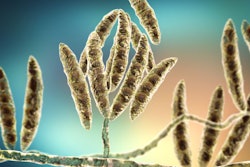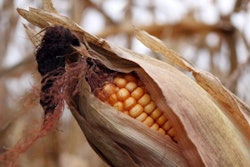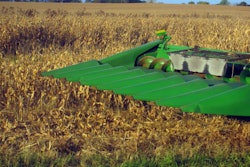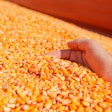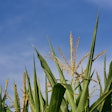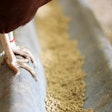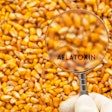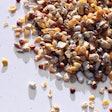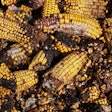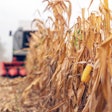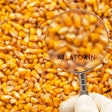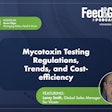In the last 30 years it has become clearer that commonly occurring fungi growing in foods and feeds may produce toxins, known as mycotoxins. These toxins have been responsible for major epidemics in man and animals in the past. The most important epidemics have been: ergotism, which killed thousands of people in Europe in the last millennium (Smith and Moss, 1985); alimentary toxic aleukia (ATA), which was responsible for the death of at least 100,000 Russian people between 1942 and 1948 (Joffe, 1978); stachybotryotoxicosis, which killed thousands of horses in the USSR in the 1930s (Moreau, 1979); and aflatoxicosis, which killed 100,000 young turkeys in the UK in 1960 and has caused death and disease in other animals, and probably in man as well (Rodricks et al., 1977).
The mycotoxin screening survey included 30 wheat samples from France. The screening provided insight into the incidence of aflatoxin B 1 (AfB 1 ), zearalenone (ZEN), deoxynivalenol (DON), T-2 toxin/HT-2 toxin, fumonisin B 1 (FB 1), fumonisin B 2 (FB 2) and ochratoxin A (OTA).
The wheat samples were collected directly from animal feed production sites. Sample providers were advised to follow the principles of good sampling (Richard, 2000). Analytical personnel and laboratory staff were not involved and therefore did not influence the sampling process at any stage. All 30 samples were collected almost immediately after harvesting, so the probability of storage mycotoxins (OTA) developing was low. More than 200 analyses were conducted to test for the occurrence of the 7 mycotoxins which are most frequently found in agricultural commodities intended for animal production. All 7 mycotoxins were analyzed by liquid chromatography tandem mass spectrometry (LC MS/MS). For the purpose of data analysis, non-detection levels were based on the limits of quantification (LOQ) of the test method for each mycotoxin: AfB1 < 1 μg/kg; ZEN <15 μg/kg; DON <50 μg/kg; FB 1 <20 μg/kg; FB 2 <20 μg/kg; OTA <1 μg/kg; T-2/HT-2 toxin <10 μg/kg.
Results
The results showed that 97% of the wheat samples were contaminated with DON. The average concentration of DON was medium; 636 μg/kg (>LOD but below EU recommended levels). The maximum concentration of DON found in one of the samples was 4260 μg/kg. None of the samples contained AfB 1, OTA, ZEN, T-2/HT-2 toxin, FB 1 and FB 2.
Conclusion
The 2018 mycotoxin survey of the French wheat concluded that the wheat harvest in France was of medium quality in terms of mycotoxin contamination. Based on the results of the survey conducted immediately after the 2018 wheat harvest, the 2018 wheat crop in France should not automatically be considered safe for inclusion in finished feed rations for all animal species.
Vigilance is always advisable as cereals in animal feeds originate from many sources. Some South European cereals harvested in 2018 have been shown to be contaminated with medium to high concentrations of aflatoxins.
The last possible line of defense is detoxification of mycotoxins in vivo. The addition of proven mycotoxin deactivators to animal feeds is a very common method of preventing mycotoxicosis and is an effective strategy to keep mycotoxin risk low under any and all conditions.


